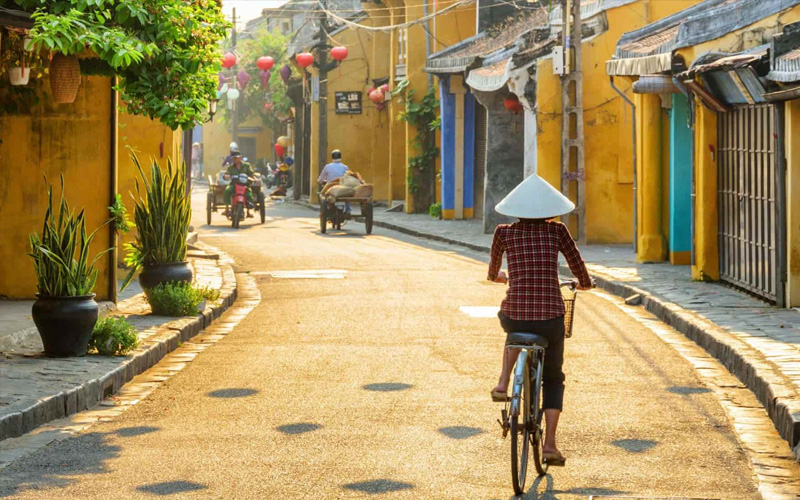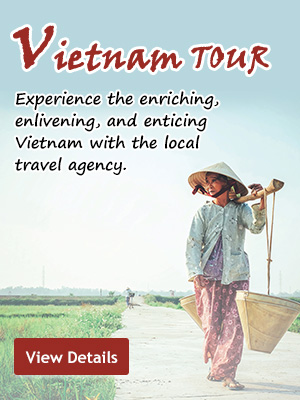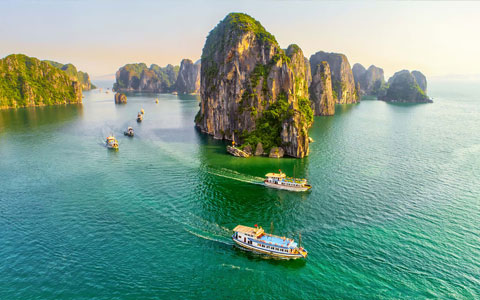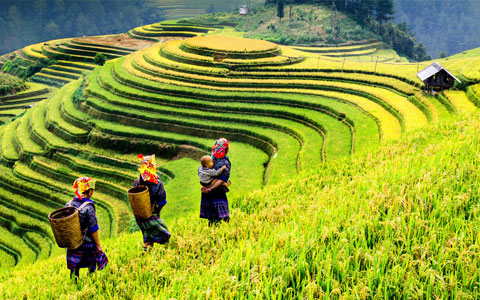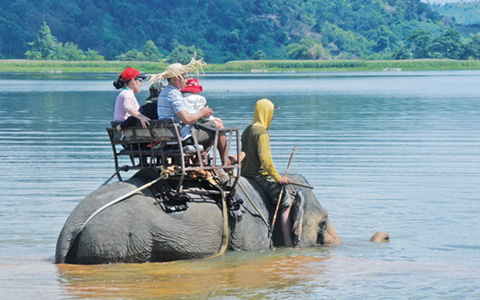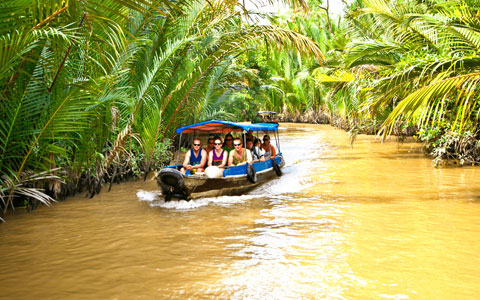Traveling to Vietnam is a real adventure, but if you are unprepared then your adventure may turn into a nightmare. Making sure you have everything covered is an important aspect of planning the trip, because you don’t want to get all the way there and find out some important item was forgotten. So for anyone planning their travel to Vietnam this year, here are some of the top things to know about before you travel to Vietnam.
1. Prepare your Vietnam Visa in Advance
Not every country is required to have a visa to get into Vietnam. Several Asian countries, especially those in the Association of South East Asian Nations (ASEAN), can travel to Vietnam with a visa exemption for limited periods. Several European nations also have exemptions.
 For most of the internaotional travelers, a visa to Vietnam is required.
For most of the internaotional travelers, a visa to Vietnam is required.
For everyone else, a visa to Vietnam is required. And while the online E-Visa is a great option for travelers who can qualify, this is only available for the citizens of 80 countries worldwide. The other option is to get the Vietnam visa from an Embassy, if your home country has one, or apply and pay online and receive an approval letter, which you show to get the visa when you arrive.
Online applicants should only use official websites, and not trust third-party sites that offer approval letters for visas.
Please Notice:
As of this time, with the reopening of tourism in Vietnam post-COVID, tourist visas are only available as 30-day single-entry visas. The Vietnamese visa office is not currently offering multiple-entry visas until further notice.
2. Get the Health Certificates Required for Entry Vietnam
As per the current COVID-19 Regulations for visitors to Vietnam, there is no longer a requirement to be vaccinated to visit Vietnam, nor are travelers required to take a COVID test before travel. As of 15 March 2022, the requirement for testing before entry was suspended indefinitely.
However, all travelers are now required to have valid travel and medical insurance that includes COVID-19 cover and to download the “PC-Covid Viet Nam” Mobile app, which must be presented before entering any Vietnamese establishments.
Please Notice:
Your travel and medical insurance must have full COVID-19 cover in case you are infected while you are in Vietnam. Without adequate insurance, you will be refused entry at the border or airport. You can compare insurance providers for your cover for travel to Vietnam, and choose the one that has the best coverage for your needs. The cheapest may not always be adequate in this situation.
3. Find the Best Time to Visit Vietnam
Vietnam is a country with three distinctly separate weather systems and climates, so it is important to know the different climates to know when to go.
 The stunning scenery of Vietnam in October.
The stunning scenery of Vietnam in October.
In the north of Vietnam, the best time for travel is from March to late May and September to mid-November, the spring and autumn seasons in this four-season region. In the south, however, the heavy tropical climate means the best time is from December to April, when it is dry and cooler. And in the typhoon-hit central region, the sub-tropical climate means the best time is from November to March.
Given that the north is the easiest region to adjust for travel across the whole country, the best time to visit Vietnam across all three regions is from December to March, which is best for the south and central, while just a little chilly for the north.
4. Choose the Best Way to Travel around Vietnam
Knowing how to get from one place to another is almost as important as your passport. You need to understand the transport systems in Vietnam, from simple motorbike taxis to buses, trains, and flights.
For long-distance travel, or if time is limited, then domestic flights are the best way to travel around the country, as they are quick and efficient, and very rarely have delays. But if you do have time, traveling by train or bus can be an awesome experience.
Trains are an option for travel between regions, as the rail network in Vietnam runs from north to south, with a few spurs side destinations that allow for elegant and pleasant travel through the stunning countryside. Trains are ideal for seeing the landscapes as you travel, and are an experience that you should not miss out on.
Buses run across the whole country, from one end to the other. And while you can travel by bus from north to south, it is not advisable. However, buses are the ideal way to travel for shorter trips between cities and towns, being quick and efficient, and generally quite cheap.
Of course, there is always the option to hire a car for your Vietnam trip, and either self-drive or have a driver. And while this is an excellent way to get around in most places, it is still not ideal for longer distances. But you do have the advantage of being able to go where you want without having to worry about other travelers.
5. Experience the Best Things to Do in Vietnam
There are many things to do in Vietnam. What are the things you can’t miss and what are the must-see attractions? Here are some best places to visit that you need to know about Vietnam before you travel so that you can better organize your Vietnam tour.
Halong Bay is a must for almost every trip to Vietnam. It is a vast open stretch of water off the coast of Northern Vietnam that is filled with crystal clear waters and astounding karst formations. While taking a Halong Bay cruise, you can visit some of the islands and even explore some of the underwater caves and beaches.
 Enjoy the stunning natural beauty along Halong Bay cruise.
Enjoy the stunning natural beauty along Halong Bay cruise.
Hoi An is one of the oldest cities in Vietnam and one of the few cities in the world that has attained UNESCO World Heritage Site status. The historic town, with more than 1,000 years of history, is now one of the most popular tourist destinations in Vietnam for its unique atmosphere that has been influenced by Chinese, Japanese, and Vietnamese culture.
During your days in Hanoi, you don’t miss the foot trip around The Old Quarter of Hanoi. It is a unique and intriguing part of town, with its mix of traditional local architecture, open green spaces, ancient shops in long wide alleys, and some of the best street food in the world.
A must-see around Ho Chi Minh City is the Mekong Delta, also known as the ‘rice bowl’ of Vietnam. You can take a cruise along the channels to see the unique floating markets and villages, and bustling towns set alongside rice fields where buffalo wallow.
Sapa, in the Lào Cai Province of Vietnam, is filled with rolling hills and mountains, and cooler than the rest of the country. It is the best place for people to immerse themselves in the gorgeous landscapes on trekking expeditions. If you are keen on trekking, don’t miss the trek in Sapa.
6. Need 10 Days or More to Explore Full Vietnam
While a Vietnam tour can be done in a week or less, it is much better to take at least 10 days to visit the country, to be able to get the best of everything. 10 days in Vietnam means you can visit the major destinations such as Hanoi and Saigon, and get out to the smaller cities like Hue and Hoi An. You also have time to spend cruising the Mekong Delta or Halong Bay, and spending time exploring some of the best parts of Vietnam. The best option for a 10-day Vietnam tour is to start in Ho Chi Minh City and work your way north, ending in Hanoi or Halong Bay.
However, if you have less time to spend traveling, it is best to focus on just one region of the country, With three regions to choose from you can work out which is best for you, and you can spend time exploring the depths of that region, without having to rush to get to the next destination. And you can always come back again and see the rest, because you know you will want to at the end of it.
7. Pack the Right Things for Your Vietnam Tour
Vietnam is generally hot, though the weather can vary considerably from region to region. What you were depends on the time of year you are there and what part of Vietnam you are visiting. Vietnam is generally more conservative than many are used to, so you should respect this and we recommend wearing generally modest clothes and covering shoulders and knees, especially in the temples. A sarong is a useful addition to your packing list for both men and women. For the hotter regions, light comfortable clothing is best. And for the north, in spring and autumn, warmer clothes and a couple of light sweaters for the evenings when it gets chilly.
You might also want to pack a few additional items such as a light raincoat, your reusable water bottle, sunscreen and sunglasses, and some comfortable flip-flops.
8. Carry Enough Cash with You
ATMs in Vietnam are quite common now, but few establishments accept card transactions. So if you are traveling around a lot, or buying a lot of things, then it is best to make sure you have enough cash with you, in dollars or dong, until you get back to your hotel or your next location with an ATM.
You can exchange your currency in most major banks, as well as in hotels and money changers that can be found around the cities. Hotels and money changers offer a lower rate of exchange, which is how they make their profit, so if you are on a budget, best to use the banks and get a better rate.
9. Don’t Forget Vietnam Cuisine and Vietnamese Coffee
Vietnam is renowned as much for its cuisine and coffee as it is for its temples, landscapes, karst formations, and the Mekong Delta. Anyone traveling to Vietnam must try the delicious cuisine of the country, especially the renowned “banh mi”, and top it off by partaking in the vibrant café culture that exists in Vietnam.
 Never miss the toothsome Vietnam cuisine when your travel to Vietnam.
Never miss the toothsome Vietnam cuisine when your travel to Vietnam.
In Vietnam, coffee is not just a drink; it is a way of life. Cafes in most cities and towns open as early as 4 AM, and many continue late into the night. And Vietnamese coffee is a force to be reckoned with, considering the country is the world’s second-largest coffee exporter.
Coffee shops exist in every town and city in Vietnam. But for the best, even by Vietnamese standards, locals recommend trying the cafes in Hanoi, which has been dubbed as the center of Vietnamese coffee culture.
So while planning your Vietnam tour, it is suggested to leave enough time for tasting Vietnam cuisine and coffee.
10. Remember to Order a local SIM Card in Advance
You can usually find 4G or 5G prepaid SIM card in service provider kiosks at the airport, or just visit a local mobile phone shop near your hotel. You will need this to add data to run the “PC-Covid Viet Nam” Mobile app, which is required for all visitors. It is also useful for checking train and flight times online, and using the local Grab ride app if you want to get a ride somewhere and don’t want a taxi.
11. Learn to Bargain to Save Money
Bargaining is a way of life in Asia, and so does in Vietnam. Most local vendors and market stalls will have their “first” and “Last” prices, though only the first price is visible. Bargaining can be fun, and a way to experience a part of Vietnamese culture, so learn how to bargain like a native.
But don’t push too hard, or you may upset the vendors. Locals know when to stop, so if it looks like he won’t go any lower; accept that as your last price.
Useful Phrases to Help You Bargain in Vietnam
Xin Chào (sin chow) / Hello
Dạ / Không (yah / comb) - Yes / No
Bao nhiêu? (bow nyew) / How much?
Mắc quá (mack wha) / Too expensive!
12. Learn to Stay Safe when Tour Vietnam
Vietnam is a generally safe country to visit, but as with anywhere, common sense is still a requirement for travel. While major crime is rare, petty crimes such as pickpockets are common, and most crimes against travelers are usually opportunistic, and never planned.
Ensuring you have some common sense regarding your wallet, phone, bag, and documents can mean the difference between a great holiday and a total disaster. Keep your valuables close, don’t wave your expensive iPhone 14 around, and make sure your backpack is slash-proof, and you have covered most of the bases. Then just remember not to wander around alone late at night in unknown neighborhoods.
Conclusion
Visiting Vietnam is one of the trips of a lifetime, but to make sure you enjoy it more, makes sure you are prepared. Following our top tips will help to make your trip the most memorable yet.
More Related Readings
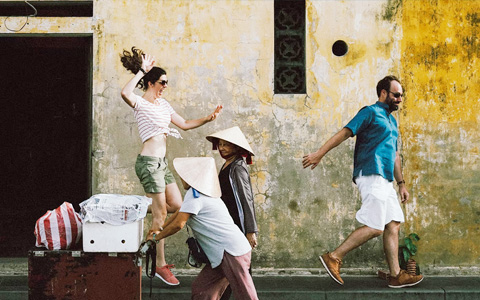
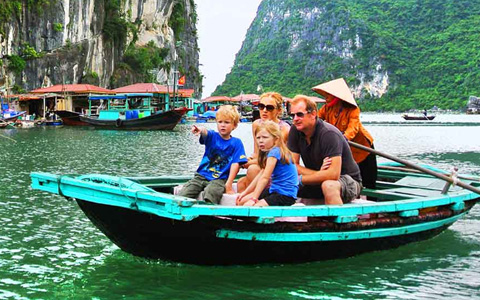
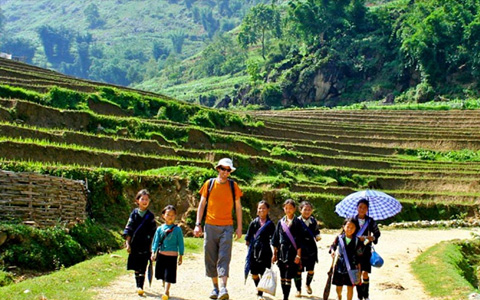
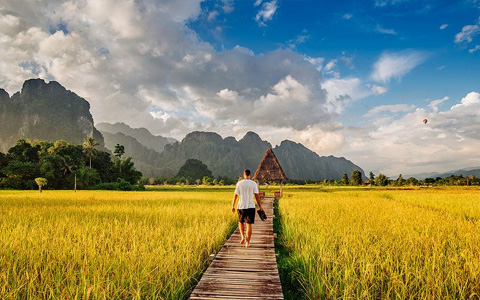

 inquiry@myasiatours.com
inquiry@myasiatours.com